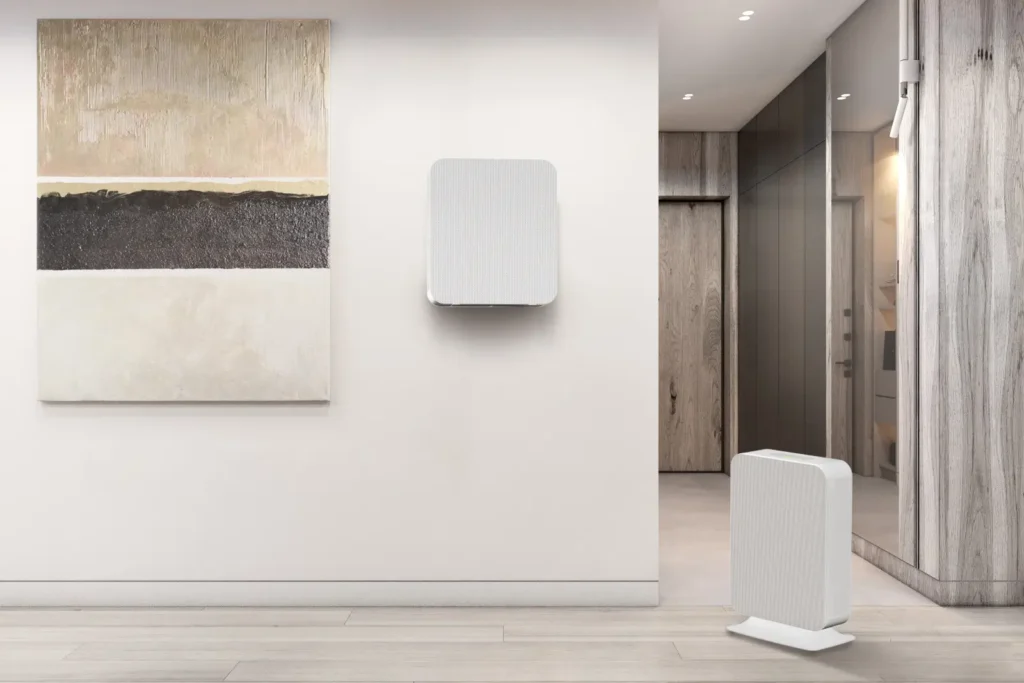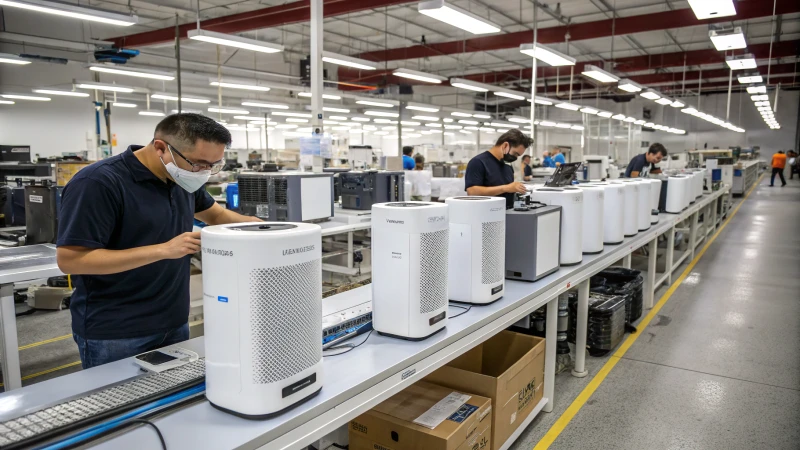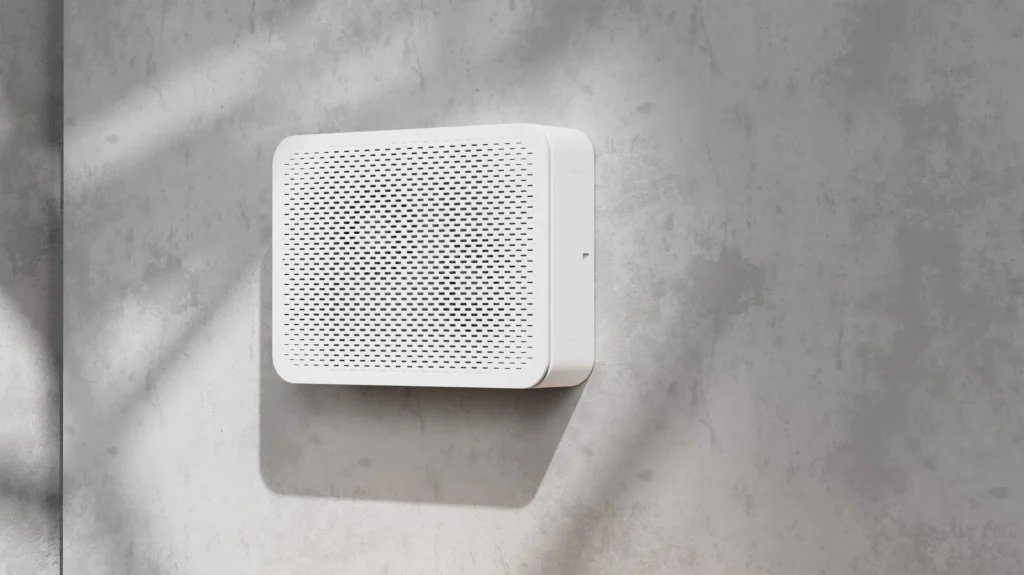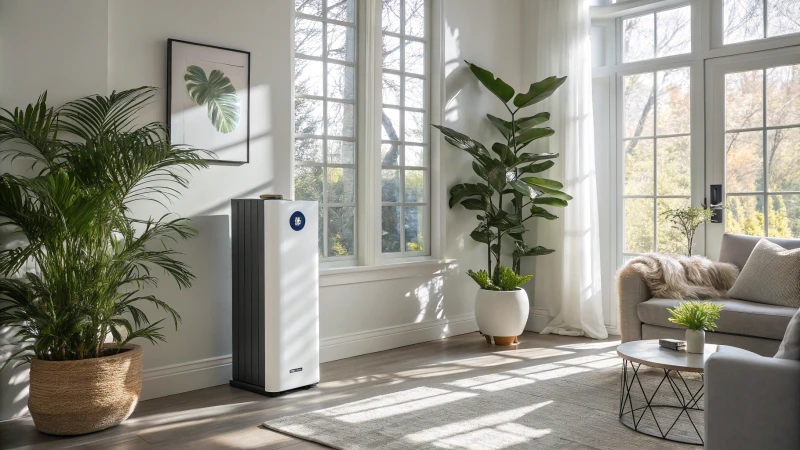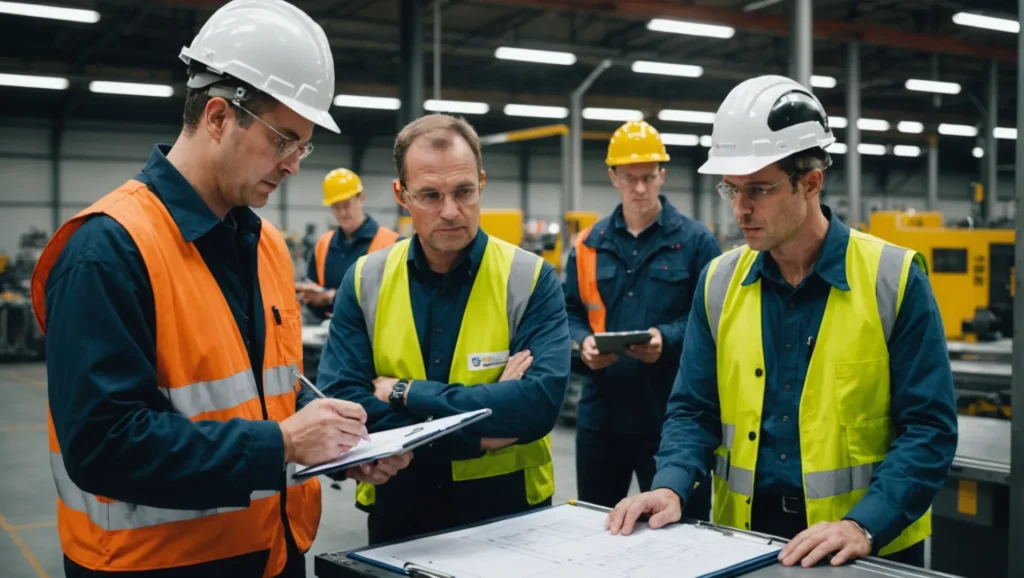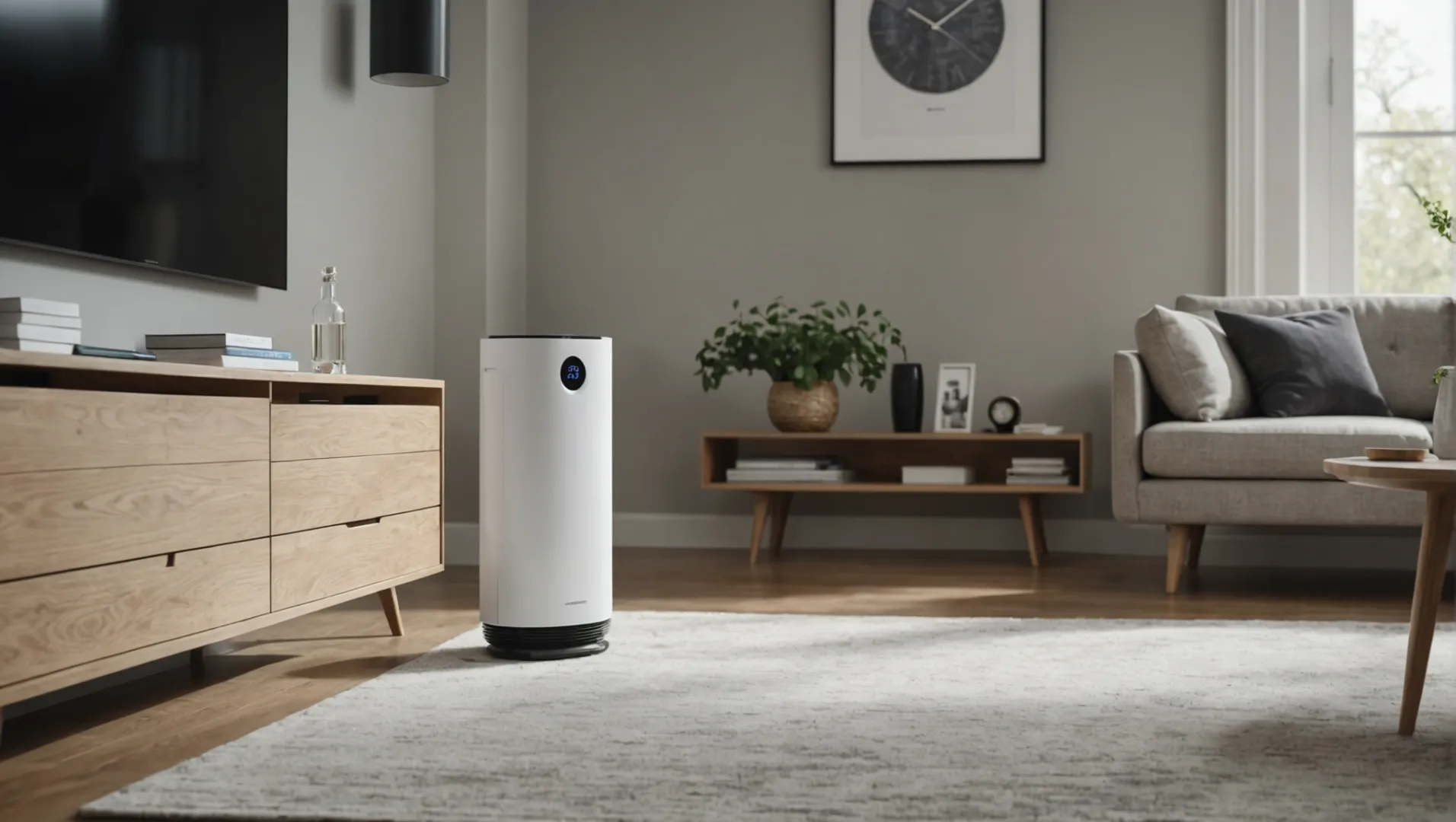
Num mundo repleto de opções, como fazer brilhar o seu purificador de ar?
A diferenciação dos produtos purificadores de ar num mercado competitivo implica visar segmentos específicos de consumidores, incorporar tecnologia avançada e destacar caraterísticas únicas que respondam às necessidades dos clientes.
Vamos explorar estratégias personalizadas, como a segmentação do mercado e a inovação tecnológica, que podem elevar o seu purificador de ar acima da concorrência!
A tecnologia de filtragem avançada é crucial para o sucesso do purificador de ar.Verdadeiro
A filtragem avançada, como os filtros HEPA, captura 99,97% de partículas.
Quais são as principais caraterísticas que os clientes procuram nos purificadores de ar?
No atual mercado competitivo dos purificadores de ar, é vital compreender as preferências dos clientes.
As principais caraterísticas que os clientes procuram nos purificadores de ar incluem tecnologia de filtragem avançada, níveis de ruído, área de cobertura, facilidade de utilização e opções de conetividade inteligente.
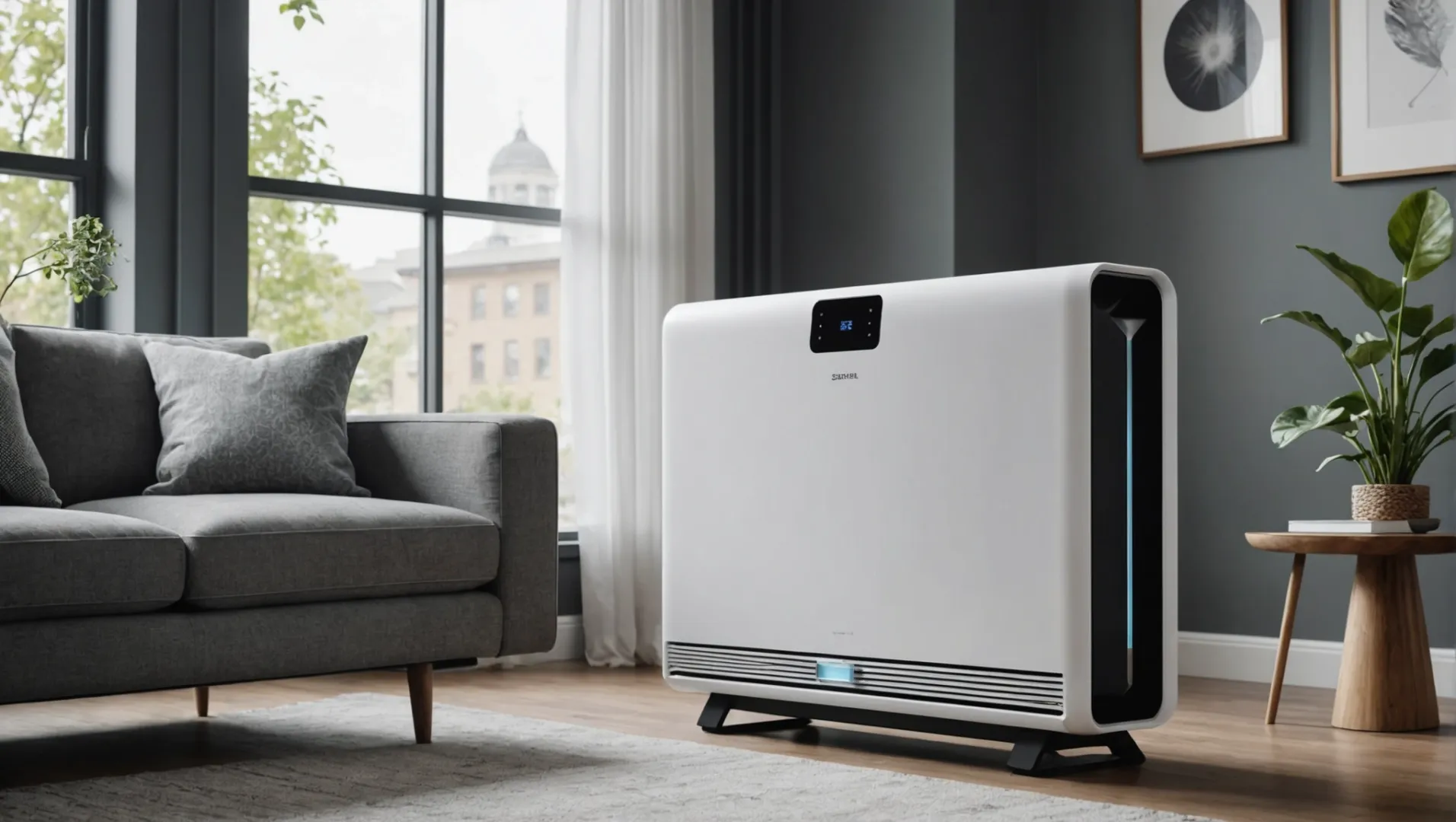
Tecnologia de filtragem
Uma das principais caraterísticas que os consumidores avaliam é a tecnologia de filtragem1 que um purificador de ar utiliza. O ar particulado de alta eficiência (HEPA) são populares pela sua capacidade de capturar até 99,97% de partículas tão pequenas como 0,3 microns. Alguns modelos avançados incorporam filtros de carvão ativado para remover odores e gases, ou luz UV para matar bactérias e vírus.
Níveis de ruído
O nível de ruído é uma consideração crucial, especialmente para aqueles que planeiam utilizar o purificador de ar em quartos ou escritórios. Os clientes procuram frequentemente aparelhos que funcionem silenciosamente sem comprometer o desempenho. Os purificadores com várias definições de velocidade permitem aos utilizadores ajustar o nível de ruído de acordo com o seu ambiente.
Área de cobertura
O tamanho da divisão que um purificador de ar pode servir eficazmente é outro fator crítico. Normalmente, os consumidores procuram aparelhos que correspondam ou excedam a metragem quadrada do espaço a que se destinam. As áreas de cobertura maiores são particularmente importantes para casas ou escritórios em plano aberto.
| Tamanho do quarto | Recomendado CADR (Taxa de fornecimento de ar limpo) |
|---|---|
| Pequeno (até 200 pés quadrados) | 100-150 CADR |
| Médio (200-400 pés quadrados) | 150-250 CADR |
| Grande (400+ pés quadrados) | 250+ CADR |
Facilidade de utilização e manutenção
Os utilizadores valorizam a simplicidade de funcionamento e manutenção. Caraterísticas como controlos intuitivos, indicadores de mudança de filtro e componentes fáceis de limpar melhoram a experiência do utilizador. Os modelos com filtros laváveis ou filtros de maior duração reduzem os custos contínuos, apelando a compradores preocupados com o orçamento.
Conectividade inteligente
Com o aumento das casas inteligentes, as funcionalidades de conetividade, como o controlo por aplicações, a monitorização da qualidade do ar e a integração com sistemas domésticos inteligentes, como o Alexa ou o Google Home, estão a tornar-se cada vez mais procuradas. Estas funcionalidades não só oferecem conveniência, como também fornecem aos utilizadores informações valiosas sobre a qualidade do ar da sua casa.
A compreensão destas caraterísticas-chave ajuda os fabricantes a adaptarem os seus produtos às necessidades específicas dos consumidores, conduzindo a uma maior satisfação e fidelidade à marca.
Os filtros HEPA captam 99,97% de partículas.Verdadeiro
Os filtros HEPA são altamente eficazes, capturando partículas tão pequenas como 0,3 microns.
A conetividade inteligente não é importante para os purificadores de ar.Falso
A conetividade inteligente oferece conveniência e informações sobre a qualidade do ar, aumentando o valor.
Como é que a segmentação de segmentos específicos de consumidores pode aumentar a atração pelo produto?
Compreender o seu público é fundamental para se destacar no mercado dos purificadores de ar.
Visar segmentos específicos de consumidores pode aumentar o atrativo do produto, alinhando as caraterísticas e a mensagem com as necessidades e preferências distintas de cada grupo.

Compreender os segmentos de consumidores
Para visar eficazmente segmentos específicos de consumidores, é crucial começar por identificar e compreender as caraterísticas e necessidades únicas desses grupos. Por exemplo, os donos de animais de estimação podem dar prioridade a purificadores de ar que combatam os pêlos e os odores dos animais, enquanto os novos pais podem estar preocupados com a qualidade do ar para os seus bebés, procurando purificadores com capacidades de filtragem melhoradas.
Personalização de caraterísticas do produto
Ao adaptarem os produtos para satisfazerem as exigências destes segmentos distintos, as empresas podem aumentar significativamente o atrativo dos seus produtos. Considere o desenvolvimento de filtros especializados, tais como Filtros de carvão ativado2 para os donos de animais de estimação neutralizarem os odores e prenderem os pêlos, ou avançados HEPA filtros concebidos para captar partículas finas que são mais susceptíveis de afetar os bebés.
| Segmento | Caraterísticas principais |
|---|---|
| Proprietários de animais de estimação | Filtros de carvão ativado, baixo nível de ruído |
| Novos pais | Avançado HEPA Filtros, acessórios amigos do bebé |
| Entusiastas da saúde | Filtros anti-microbianos, desempenho de longa duração |
Posicionamento e mensagens
A forma como um produto é posicionado e comercializado também pode ter impacto na sua atração por vários segmentos de consumidores. As campanhas de marketing devem ser concebidas de modo a refletir os valores e as preocupações de cada grupo. Por exemplo, posicionar um produto como "imprescindível para uma vida saudável" pode atrair entusiastas da saúde, ao passo que realçar o funcionamento silencioso e a rentabilidade pode atrair famílias preocupadas com o orçamento.
Tirar partido da tecnologia
A integração de tecnologias modernas, como a IoT, pode personalizar ainda mais as experiências para segmentos específicos de consumidores. A oferta de controlo móvel e de dados em tempo real sobre a qualidade do ar pode apelar aos clientes com conhecimentos tecnológicos que apreciam a conveniência e a conetividade.
Aplicação na vida real
Considere-se a história de uma empresa que conseguiu atingir vários segmentos de consumidores lançando uma gama de purificadores de ar: um modelo optimizado para grandes espaços com elevada CADR (Clean Air Delivery Rate) para as famílias, e outra versão compacta e portátil para os habitantes das cidades. Ao centrarem-se nas necessidades específicas destes grupos, conseguiram conquistar uma maior quota de mercado e aumentar a fidelidade à marca.
Ao visar estrategicamente os segmentos de consumidores, as empresas não só aumentam o atrativo dos seus produtos, como também estabelecem ligações mais profundas com o seu público, o que conduz a um crescimento sustentado do negócio.
Os donos de animais preferem purificadores com baixos níveis de ruído.Verdadeiro
Os donos de animais de estimação dão muitas vezes prioridade a aparelhos silenciosos para evitar incomodar os seus animais.
Os filtros HEPA avançados não são ideais para bebés.Falso
Os filtros HEPA avançados são ideais para captar as partículas finas que afectam os bebés.
Que papel desempenha a tecnologia na diferenciação dos purificadores de ar?
Num mercado em rápida evolução, os avanços tecnológicos são fundamentais para distinguir os purificadores de ar.
A tecnologia diferencia os purificadores de ar, melhorando a eficiência da filtragem, integrando funcionalidades inteligentes e adaptando as soluções a necessidades ambientais específicas.
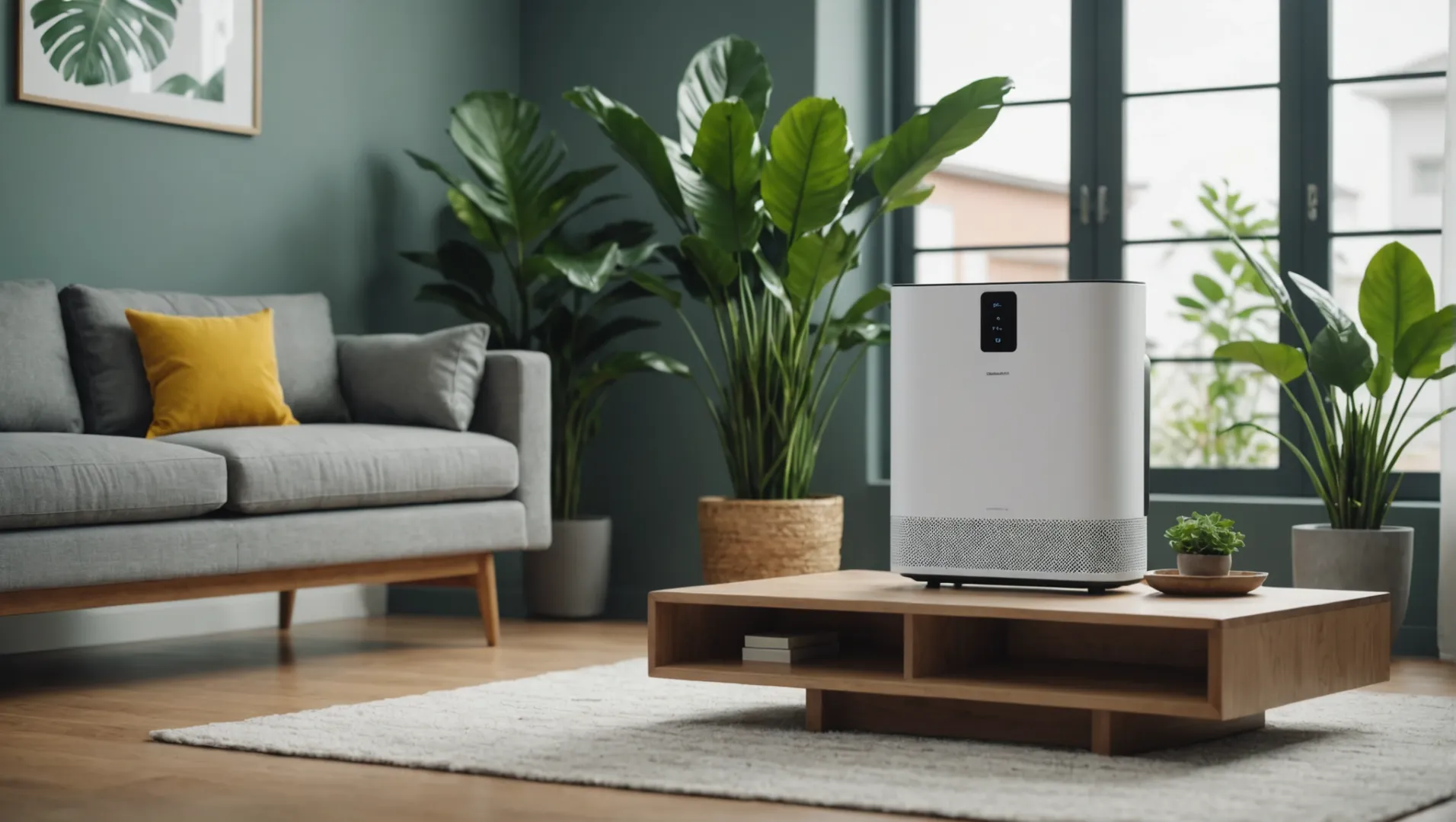
Melhorar a eficiência da filtragem
Um dos avanços tecnológicos mais significativos nos purificadores de ar é a melhoria da sistemas de filtragem3. Ar com partículas de alta eficiência (HEPA) são agora normalmente melhorados com carvão ativado para capturar odores e gases, o que os torna ideais para casas com animais de estimação ou fumadores. Além disso, alguns purificadores incluem tecnologias avançadas, como precipitadores electrostáticos ou luz UV, para combater micróbios e alergénios de forma mais eficaz.
Caraterísticas inteligentes e conetividade
A integração de Internet das coisas (IoT)4 transformou os purificadores de ar em dispositivos inteligentes que oferecem controlo remoto através de aplicações móveis, permitindo aos utilizadores monitorizar a qualidade do ar e ajustar as definições a partir de qualquer lugar. Os sensores que detectam poluentes e ajustam automaticamente o funcionamento do purificador estão a tornar-se padrão, fornecendo aos utilizadores dados em tempo real e uma experiência mãos-livres.
| Funcionalidade inteligente | Benefício |
|---|---|
| Controlo de aplicações móveis | Comodidade e monitorização remota |
| Sensores de qualidade do ar | Ajustes automáticos para um desempenho ótimo |
Soluções à medida para necessidades específicas
A tecnologia avançada permite a personalização dos purificadores de ar para satisfazer as necessidades específicas dos clientes. Por exemplo, os purificadores de ar concebidos para infantários podem incluir um funcionamento ultra-silencioso e uma função de modo noturno para garantir que o sono do bebé não é perturbado. Da mesma forma, os purificadores destinados a pessoas com alergias graves podem utilizar filtros especializados para capturar o pólen e os ácaros de forma mais eficiente.
Ao tirar partido destes avanços tecnológicos, os fabricantes podem diferenciar os seus produtos num mercado saturado, fornecendo soluções personalizadas que satisfazem as diversas necessidades dos consumidores.
Os filtros HEPA, por si só, são suficientes para todas as necessidades de purificação do ar.Falso
Os filtros HEPA necessitam de melhorias como o carvão ativado para os odores.
A integração da IoT permite o controlo remoto dos purificadores de ar através de aplicações.Verdadeiro
A IoT permite a monitorização e o controlo remoto dos purificadores com base em aplicações.
Como é que as tácticas de marketing eficazes podem aumentar a visibilidade do seu purificador de ar?
Descubra as estratégias de marketing que podem levar a sua marca de purificador de ar a novos patamares.
As tácticas de marketing eficazes para purificadores de ar incluem a utilização de publicidade digital, envolvimento nas redes sociais, parcerias com influenciadores e marketing de conteúdos para aumentar a visibilidade da marca e o envolvimento dos clientes.

Tirar partido da publicidade digital
Na era digital atual, a publicidade online é uma ferramenta poderosa. Plataformas como o Google Ads permitem-lhe segmentar palavras-chave específicas que os potenciais clientes estão a pesquisar, como "melhor purificador de ar para alergias" ou "purificador de ar silencioso para o quarto". Isto garante que o seu produto aparece de forma proeminente nos resultados da pesquisa.
Utilizar o envolvimento nas redes sociais
As plataformas de redes sociais, como o Instagram, o Facebook e o Twitter, oferecem uma excelente oportunidade para interagir diretamente com o seu público. Partilhe conteúdo informativo sobre os benefícios dos seus purificadores de ar, publique testemunhos de clientes e organize sessões interactivas, como perguntas e respostas ou demonstrações ao vivo. Isto cria uma comunidade em torno da sua marca e promove a confiança entre os potenciais compradores.
Parcerias com influenciadores
A colaboração com influenciadores que se alinham com os valores da sua marca pode aumentar significativamente a visibilidade do seu produto. Os influenciadores têm um público estabelecido que confia nas suas recomendações. Por exemplo, uma parceria com um influenciador de saúde e bem-estar para mostrar a capacidade do seu purificador de ar de melhorar a qualidade do ar interior pode ser altamente eficaz.
Como criar um marketing de conteúdo convincente
O marketing de conteúdos consiste em criar conteúdos valiosos que respondam a perguntas ou resolvam problemas dos seus potenciais clientes. Isto pode ser feito através de publicações em blogues, vídeos ou infografias. Os tópicos podem incluir "Como escolher o purificador de ar certo para a sua casa" ou "Compreender os diferentes tipos de filtros de ar". Ao fornecer informações úteis, posiciona a sua marca como um especialista do sector.
Implementação de estratégias de SEO
A otimização do seu sítio Web e das páginas de produtos para os motores de busca garante que os clientes o encontrem facilmente. Utilize palavras-chave relevantes, meta descrições e textos alternativos para imagens para melhorar as classificações dos motores de busca. Considere a possibilidade de criar uma secção de FAQ que aborde as questões mais comuns sobre purificadores de ar.
Ao incorporar estas tácticas de marketing, pode aumentar eficazmente a visibilidade dos seus produtos purificadores de ar e estabelecer uma presença sólida no mercado. Para obter estratégias mais pormenorizadas sobre como tirar partido das ferramentas digitais, consulte a nossa guia sobre estratégias para as redes sociais5 e parcerias com influenciadores6.
Os anúncios digitais aumentam a visibilidade dos purificadores de ar.Verdadeiro
A publicidade digital visa palavras-chave específicas, aumentando a visibilidade do produto.
Os influenciadores não podem aumentar as vendas de purificadores de ar.Falso
As parcerias com influenciadores podem aumentar significativamente a visibilidade e as vendas dos produtos.
Conclusão
Abrace a inovação e as percepções dos consumidores para se destacar no mercado dos purificadores de ar.
-
Descubra as principais tecnologias de filtragem que melhoram o desempenho dos purificadores de ar..: Testámos mais de 60 purificadores de ar nos últimos nove anos, e o excecional Coway Airmega AP-1512HH Mighty é a nossa melhor escolha entre eles. ↩
-
Saiba como os filtros de carvão ativado combatem os odores e melhoram a qualidade do ar..: Os filtros de carvão ativado são utilizados por alguns fabricantes de purificadores de ar para reter os compostos orgânicos voláteis, moléculas responsáveis pelos odores e por alguns ... ↩
-
Descubra as tecnologias de filtragem de ponta que aumentam a eficiência da purificação do ar..: As 20 principais tecnologias deste artigo estão a impulsionar grandes avanços industriais e a satisfazer a necessidade crescente de ar mais limpo numa variedade de aplicações. ↩
-
Explore as vantagens das funcionalidades inteligentes dos purificadores de ar modernos..: Ao preservar a qualidade ideal do ar e ao eliminar odores e poluentes incómodos, os purificadores de ar inteligentes com integração da IoT ajudam a criar um ambiente ... ↩
-
Explore estratégias abrangentes para aumentar a visibilidade da marca através das redes sociais: Em termos simples, uma estratégia para as redes sociais é um plano abrangente que define os seus objectivos em matéria de redes sociais, as tácticas utilizadas para os atingir e as métricas ... ↩
-
Aprenda a tirar partido das parcerias com influenciadores para aumentar a visibilidade do produto..: Encontrar os seus parceiros influenciadores - Contactar para propor uma colaboração - Acordar os seus termos - Monitorizar os resultados da colaboração. ↩


